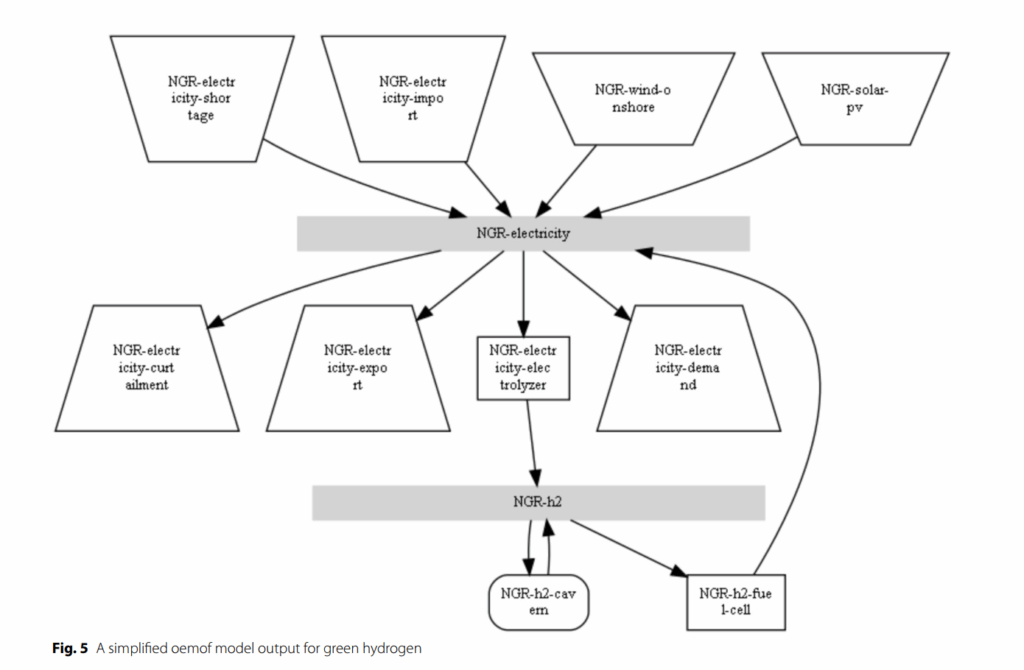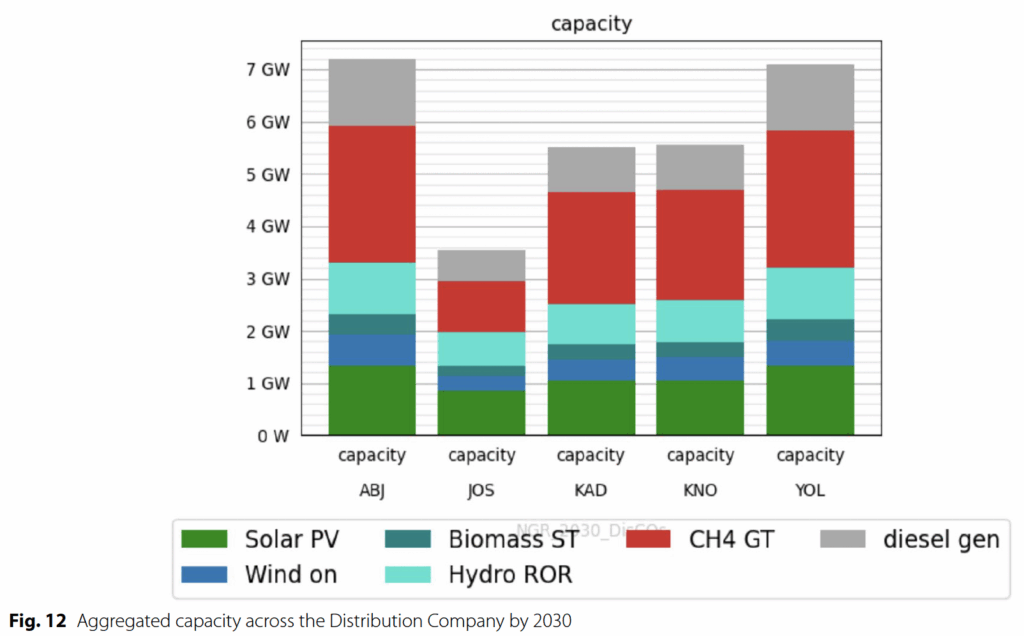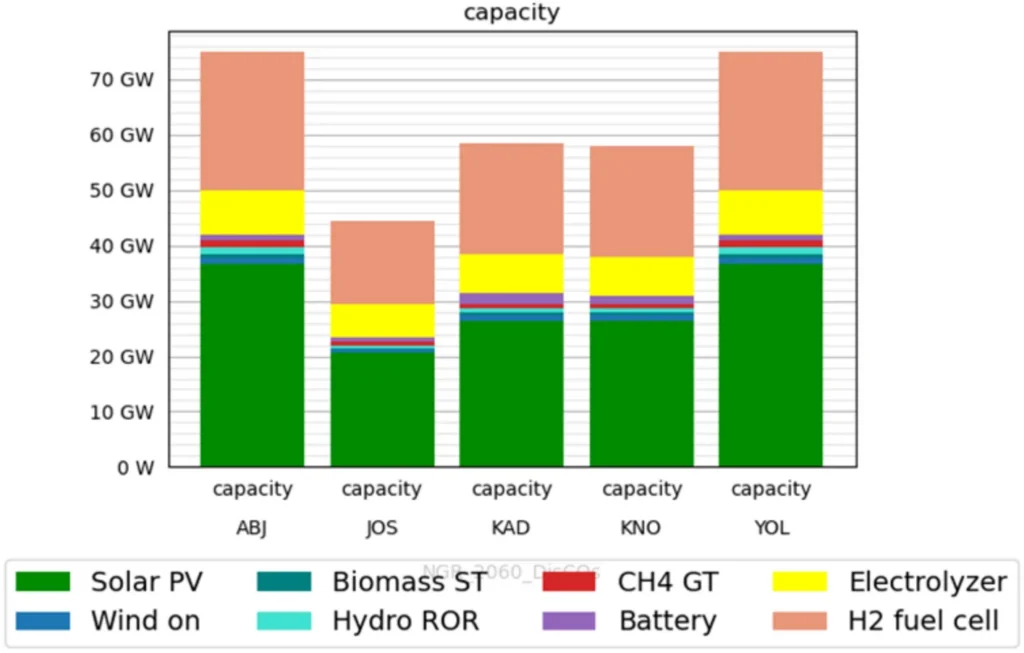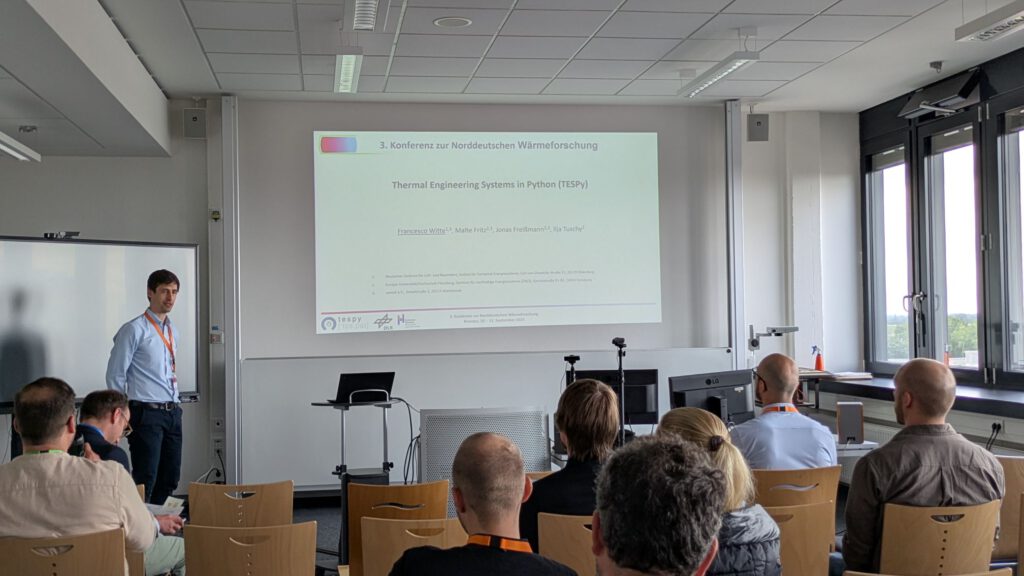Nigeria’s power system still relies heavily on captive diesel and petrol generators, with sizeable suppressed and unmet demand. The study by Shari et al. takes this reality as the starting point and uses the Open Energy Modelling Framework (oemof) to ask a question: given Nigeria’s 2060 net-zero target, how and where does green hydrogen make sense once you optimise the system transparently?
The model is implemented with oemof-solph as a cost-minimising linear optimisation. The energy system is represented in oemof’s graph structure which uses buses for carriers and components connected by flows. Electricity and hydrogen each have dedicated buses. Supply components include gas turbines and diesel sets alongside solar PV, onshore wind, hydropower and biomass. The hydrogen chain is modelled with standard solph components: an electrolyser transformer converts surplus electricity to hydrogen, a hydrogen storage component holds the gas, and a fuel-cell transformer reconverts it to electricity when needed. Batteries provide a parallel short-term storage route. Demand, exports and curtailment are represented as sinks. Figures in the paper show the reference energy system and a simplified green-hydrogen chain built exactly this way.

Before scenario work, the team benchmarks the model against current system. Using a national hourly load profile adapted to Nigeria, the baseline dispatch reproduces the current diesel-heavy mix and visible unmet demand. That validation step is central to the study’s credibility: subsequent policy results are judged against a present-day system the model can already replicate.
Three national scenarios are then evaluated as investment and policy constraints on the same system. Business as Usual allows gradual PV growth and treats gas as a transition fuel while diesel persists for longer. The Sustainability scenario raises renewable and efficiency ambition and phases out diesel more quickly. The Carbon-neutral scenario follows the government’s Energy Transition Plan and permits larger roles for hydrogen, bioenergy and nuclear. Long-term demand growth differs across scenarios and is applied in the 2045 and 2060 model periods.
Because hydrogen will only be useful where resources and grid conditions warrant it, the study adopts a multi-node variant that aligns the model with five Distribution Companies (Abuja, Jos, Kaduna, Kano, Yola). Each DisCo becomes a regional node with its own resources, hourly demand and transfer links to the others. This lets the optimiser choose locally among four options for surplus variable renewables: charge batteries, export, curtail, or produce hydrogen. The choice depends on costs, efficiencies and future scarcity in each node. The paper motivates this distributed framing and shows hourly dispatch for both 2030 and 2060.

In Business as Usual scenario, diesel remains substantial in 2030 and only fades late, with gas covering much of the residual demand and storage growing mainly to support solar. In the Sustainability case, the crossover comes earlier: solar covers a significant share by 2030, diesel retreats, and by 2060 renewables dominate with hydrogen and batteries providing balancing. In the Carbon-neutral case, demand is higher but the cost-optimal mix by 2060 still prioritises solar, electrolysers, hydrogen storage and fuel cells; nuclear and bioenergy appear but do not dominate the power balance. Crucially, in the DisCo-level 2060 dispatch, diesel no longer appears in the hour-to-hour operation. Excess PV is directed to electrolysers when it outperforms curtailment plus future scarcity, hydrogen is stored, and fuel cells supply evening peaks or low-renewable periods. Inter-DisCo transfers smooth local mismatches without large curtailment spikes.

The paper is available online (https://doi.org/10.1186/s40807-024-00107-1).
Figures reproduced from:
Shari, B.E., Moumouni, Y., Ohunakin, O.S. et al. (2024). Exploring the role of green hydrogen for distributed energy access planning towards net-zero emissions in Nigeria.Sustainable Energy Research, 11, 16. https://doi.org/10.1186/s40807-024-00107-1.
Licensed under Creative Commons Attribution 4.0 International (CC BY 4.0).

